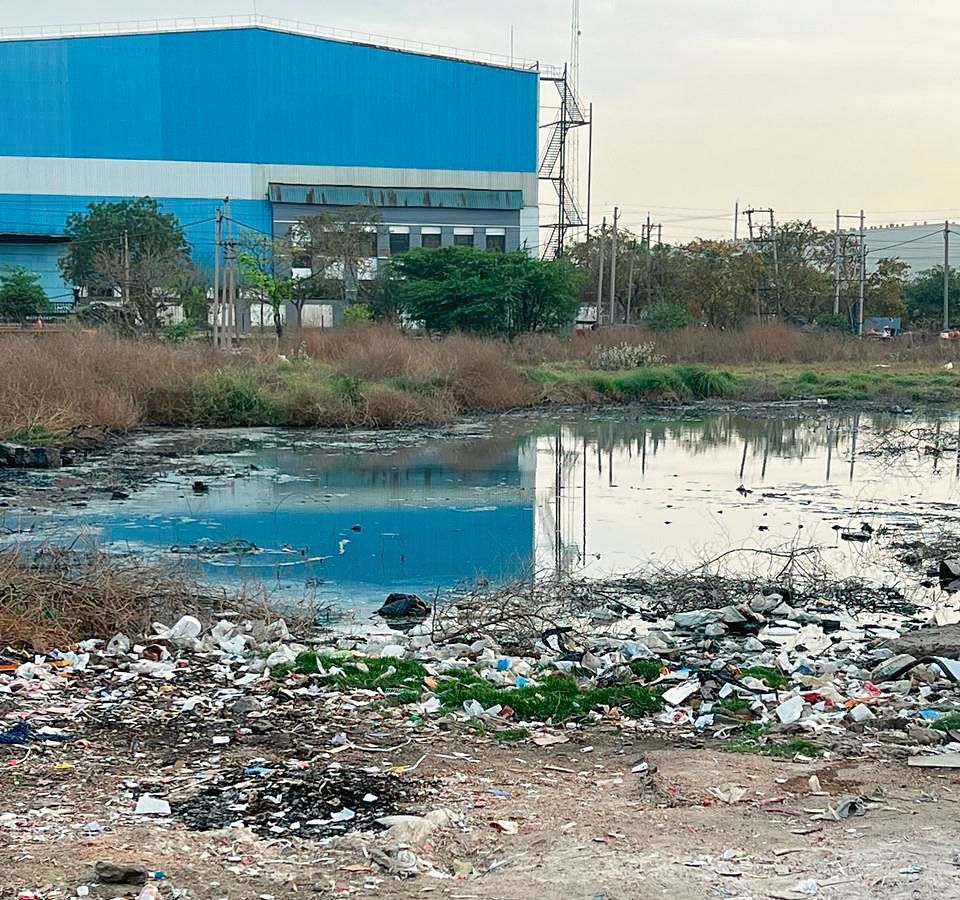85% of Faridabad’s domestic waste ends in water bodies, STP capacity inadequate
Bijendra Ahlawat
Faridabad, July 21
Owing to the poor treatment facilities and infrastructure for proper waste disposal in Faridabad, air and water pollution continue to persist in the city.
Around 85 per cent of the untreated domestic waste of the district finds its way into drains, canals and rivers — a gross violation of the norms.
Despite the imposition of the pollution regulations by various agencies such as the National Green Tribunal (NGT), National Mission for Clean Ganga (NMCG) and the Union Ministry of Environment, the unscientific practice of releasing untreated sewage waste has not been curbed.
While the treatment capacity of the sewage treatment plants (STPs) of the city has been claimed to be around 200 MLD (million litres per day), the functional capacity is less than 50 MLD as the recently upgraded STPs are yet to become fully functional, according to sources in the district administration.
“The domestic waste of the city requires a treatment capacity of over 300 MLD. The majority of the untreated waste is released into drains, eventually making its way into the Yamuna,” said a former official of the Faridabad district administration.
Two of the city’s STPs were recently upgraded by the Faridabad Municipal Corporation (MC) and would have a combined capacity of 180 MLD. These, however, are yet to be made functional. The existing treatment capacity of the district remains between 40 and 50 MLD, perhaps due to technical and supply issues, sources opined.
“Many manufacturing units have also been discharging untreated waste into drains or out in the open,” alleged Varun Gulati, an activist who has lodged several complaints in this regard with the NGT and the NMCG.
Sources claimed that many industrial units located in non-conforming areas have little to no access to the civic infrastructure or STPs and ETP facilities.
“Over 20 acres in sectors 57, 58 and 59 have become victim to the discharge of untreated waste,” claimed Satvir Dagar, a resident of Jharsaintly village.
“Underground water being contaminated with chemicals and metals such as arsenic, sulfur and lead has resulted in many health issues such as cancer, kidney failure, respiratory and lung problems,” he added.
“As no outlet has been provided to sewage lines in these industrial sectors, the waste is released in the open,” said Suresh Chand Garg, an industrialist based in Sector 59.
He added that the discharge of the untreated waste had emerged as a prominent cause of air and water pollution.
State Pollution Control Board Regional Officer Sandeep Singh said while action was taken against violations as per the law, it was the MC that was responsible for ensuring the STP facilities for the treatment of the sewage waste discharged by the domestic sector.
MC Executive Engineer Nitin Kadian said the upgraded STPs were expected to be functional at full capacity soon.









